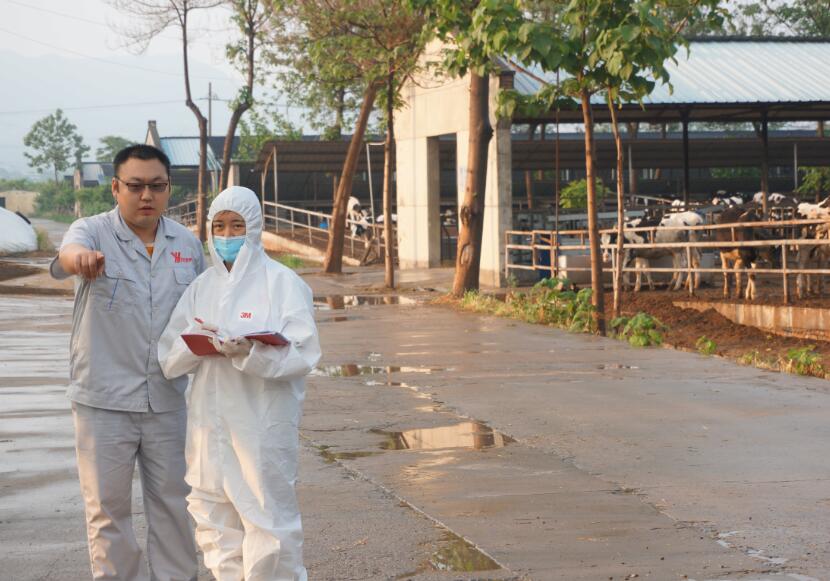The progress of grain sales at the grassroots level is obviously slower than that of the previous year. The realization of demand has prompted growers to increase their sales. The market ’s supply pressure has increased, and the swine fever epidemic has continued. The corn market may maintain a pattern of oversupply, and the price trend may be weak.
As the Spring Festival approached, grassroots growers regretted that the sales mentality was loosened, the enthusiasm for grain sales increased, the corn market increased, the market has sufficient grain sources, the processing enterprises have relatively sufficient inventory, the purchase intention is not strong, and the feed enterprises are worried about the swine fever epidemic. Now, the stocking mentality is more cautious, the overall supply of corn market is oversupply, and the spot price is slightly weak and volatile. According to the statistics of this website, as of January 14, the national average corn price closed at 1885 yuan / ton, compared with the same period last month of 1935 yuan / ton, a month-on-month decline of 50 yuan / ton, a decrease of 2.58%.
Because of the spring drought, the corn harvesting and listing time in the main production areas was delayed by about half a month, and the output reduction is expected to increase the farmers ’reluctance to sell. As a result, the inventory of farmers and traders in Northeast China has increased year-on-year, and the corn carry-over inventory has increased significantly in 2018. According to the monitoring of the National Grain and Oil Information Center, as of January 6, 2019, the corn sales progress of farmers in the three districts of Northeast China was 39%, 2% year-on-year. Among them, Heilongjiang 42%, 20% slower than the same period; Jilin 33%, 28% slower than the same period; Liaoning 46%, 25% slower than the same period; Inner Mongolia 36%, 17% slower than the same period. At present, the peak period of grain sales in the production area has been delayed, and the pressure of concentrated grain sales has moved back.
The frequency of non-plague epidemics has declined, and no new epidemics have occurred in the past week. The blockade of African swine plague areas in Daowai District, Harbin City, Heilongjiang Province, Yangxin County, Huangshi City, Hubei Province, and Chaisang District, Jiujiang City, Jiangxi Province was lifted, all of which were unblocked in Hubei . However, in the past two months, the pig stock has continued to decline. According to the latest data from the Ministry of Agriculture and Rural Affairs, the pig stock in November 2018 decreased by 0.7% month-on-month and 2.9% year-on-year. The number of capable sows decreased by 1.3% month-on-month and 6.9% year-on-year. The epidemic situation of African swine fever has continued to hinder the cross-provincial transfer of live pigs. The deduction data of this website shows that the number of pigs slaughtered from January to May 2019 will continue to maintain a high level, and the consumption of pig feed will not be optimistic. Affected by the swine fever epidemic in Africa, feed companies are more concerned about long-term feed consumption. The stock preparation enthusiasm is obviously not as good as in previous years. Some stock companies have reached the end of stock preparation.
The recent Sino-US trade talks went smoothly, and the Ministry of Agriculture and Rural Affairs approved the import of five genetically modified crops, including corn, last Tuesday. After the Sino-US trade negotiations ended, China promised to purchase more US agricultural products, energy and manufactured products. Market worries about expanding U.S. corn and grains are fermenting again, and there are rumors that China is raising the quota of imported corn to 12 million tons. At present, China's corn import quota is 7.2 million tons per year, and the tariff within the quota is 1%. If the import of US corn and alternative grains is restarted, it may put pressure on the domestic corn market again.
Since January 5, 2019, the freight rate of corn railways sent by various freight centers of Shenyang Bureau to Zhengzhou, Wuhan, Nanchang, Shanghai, and Guangzhou Railway Bureau has dropped by 15% -25%. , The deadline is March 31, 2019. Similarly, from January 8 to January 31, 2019, the freight rate from Urumqi Railway Bureau to the southwest region also dropped by 18-25%, and the freight rate from Lanzhou Bureau to the southwest region also dropped by 12-23%. Due to the impact of the reduction in railway freight rates, the spot prices in the southern sales area have been steadily weakening.
With only about 20 days left before the Spring Festival, the surplus grains of grassroots growers are still high year-on-year. The realization of demand may accelerate the progress of grain sales by grassroots growers. Periodic supply pressures will increase, and the impact of the swine fever epidemic will continue. And the expected increase in alternatives will increase, and the willingness to stock on the demand side will decrease. It is expected that the market as a whole will be in a weak and volatile pattern. There is support.
.jpg)



